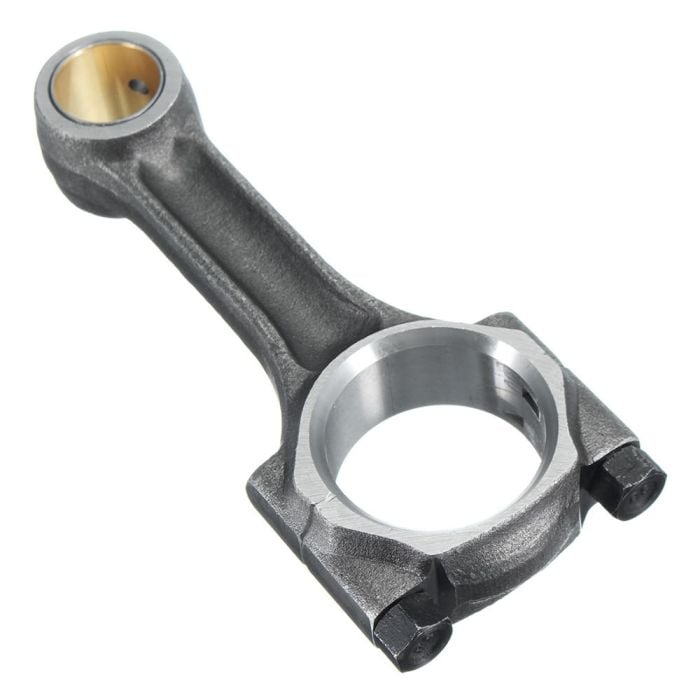Discover a high-efficiency clp engine for your equipment.
Wiki Article
Exactly How a Clp Engine Can Boost Effectiveness in Numerous Industries
The arrival of CLP engines marks a considerable shift in functional effectiveness throughout numerous sectors, driven by their capacity to enhance fuel consumption and reduce downtime. Industries such as manufacturing and logistics stand to gain significantly from their durable layout and constant power outcome, which guarantee to streamline procedures and improve performance. As organizations progressively focus on sustainability alongside performance, the function of CLP engines becomes a lot more important. What remains to be seen is how these advancements will certainly form the future landscape of industrial operations and their influence on more comprehensive economic trends (clp engine).Overview of CLP Engines
CLP engines, or Continuous Fluid Propellant engines, stand for a significant innovation in propulsion technology, specifically for area applications. These engines utilize a continual feed system that allows for the sustained expulsion of propellant, resulting in enhanced efficiency and performance compared to standard solid or hybrid propulsion systems. By preserving a constant circulation of liquid propellant, CLP engines can attain a lot more specific drive control, which is crucial for navigating spacecraft in numerous mission circumstances.The style of CLP engines incorporates advanced materials and ingenious gas management systems. clp engine. This results in reduced weight and boosted dependability, crucial variables for long-duration area missions. The continuous procedure lessens the danger of burning instability, a typical challenge in conventional rocket engines.

Benefits in Manufacturing
The production of Constant Fluid Propellant (CLP) engines presents several remarkable advantages that boost both performance and cost-effectiveness. Among the primary benefits is the structured manufacturing process, which lowers the intricacy connected with standard propulsion systems. By using fluid propellant, makers can achieve better accuracy in engine performance, bring about optimized power output and reduced waste.In addition, CLP engines help with a greater level of modularity, enabling easier combination into different production lines. This flexibility can dramatically decrease preparations and improve overall operational versatility. Using CLP innovation likewise often tends to lessen the demand for comprehensive maintenance as a result of less relocating parts, which translates into reduced downtime and operational prices.

Applications in Logistics
Leveraging Continuous Fluid Propellant (CLP) engines in logistics supplies considerable benefits in functional efficiency and integrity. These engines offer a robust option for different transportation requirements, making it possible for the seamless activity of goods throughout huge distances. The integral style of CLP engines enables constant power outcome, which equates into smoother and more predictable transport routines.Among the key applications of CLP engines in logistics is in heavy-duty freight transport, where they can drive both ground and aerial automobiles. Their capacity to keep high efficiency under differing load problems guarantees that delivery timelines are met, consequently enhancing customer fulfillment. Furthermore, CLP engines can be incorporated into automated logistics systems, helping with real-time tracking and optimizing course preparation.
Moreover, the sturdiness of CLP engines reduces maintenance downtime, permitting logistics business to optimize their operational capacities. This is specifically advantageous in warehousing procedures, where performance in taking care of and transporting products is vital. As logistics remains to develop, the combination of CLP engines stands for a forward-thinking method that not just boosts efficiency but also sustains the sector's expanding needs for reliability and speed.
Effect On Power Effectiveness
Exactly How do Continuous Fluid Propellant (CLP) engines boost power effectiveness in transport? CLP engines utilize a regular flow of fluid fuel, maximizing burning processes and preserving a stable drive result. This style reduces energy losses related to traditional combustion engines, where gas delivery can vary and lead to ineffectiveness.The constant operation of CLP engines permits a more efficient thermal cycle, resulting in greater details impulse contrasted to standard engines. clp engine. This translates to decreased gas consumption pop over to this site for the same quantity of work done, substantially reducing operational costs across various transport fields, including aeronautics and maritime markets
Furthermore, the capacity of CLP engines to keep ideal efficiency under varying load conditions reduces the demand for frequent velocity and slowdown, additionally enhancing fuel performance. Enhanced power performance not just adds to cost financial savings however additionally causes decrease greenhouse gas emissions, straightening with global sustainability goals.
Future Trends and Innovations
Arising advancements in Constant Liquid Propellant (CLP) engine innovation guarantee to change the landscape of transportation efficiency and sustainability. As sectors pivot towards greener choices, CLP engines stand at the center, integrating cutting-edge products and style methodologies that enhance performance while decreasing environmental impact.Among one of the most appealing patterns is the fostering of crossbreed systems that combine CLP engines with eco-friendly energy resources. This synergy can maximize fuel consumption and reduce emissions, straightening with global sustainability objectives. Additionally, improvements in computational liquid characteristics (CFD) are facilitating the style of more aerodynamically effective engines, leading to lowered drag and enhanced gas performance.
Additionally, the development of wise monitoring systems is readied to enhance functional performances. These systems take advantage of information analytics and IoT modern technology to maximize engine performance in real-time, making certain that the engines run within their most effective criteria.
As research study remains to check out different propellant solutions-- such as biofuels and artificial gas-- the future of CLP engines looks encouraging. By taking advantage of these developments, sectors can not just boost their effectiveness yet additionally contribute dramatically to a cleaner, much more sustainable future in transport.
Final Thought
In final thought, CLP engines stand for a significant development in performance across numerous markets. The integration of advanced materials and less relocating parts from this source minimizes upkeep demands, while positioning with sustainability objectives positions CLP engines as an essential technology for the future.Report this wiki page